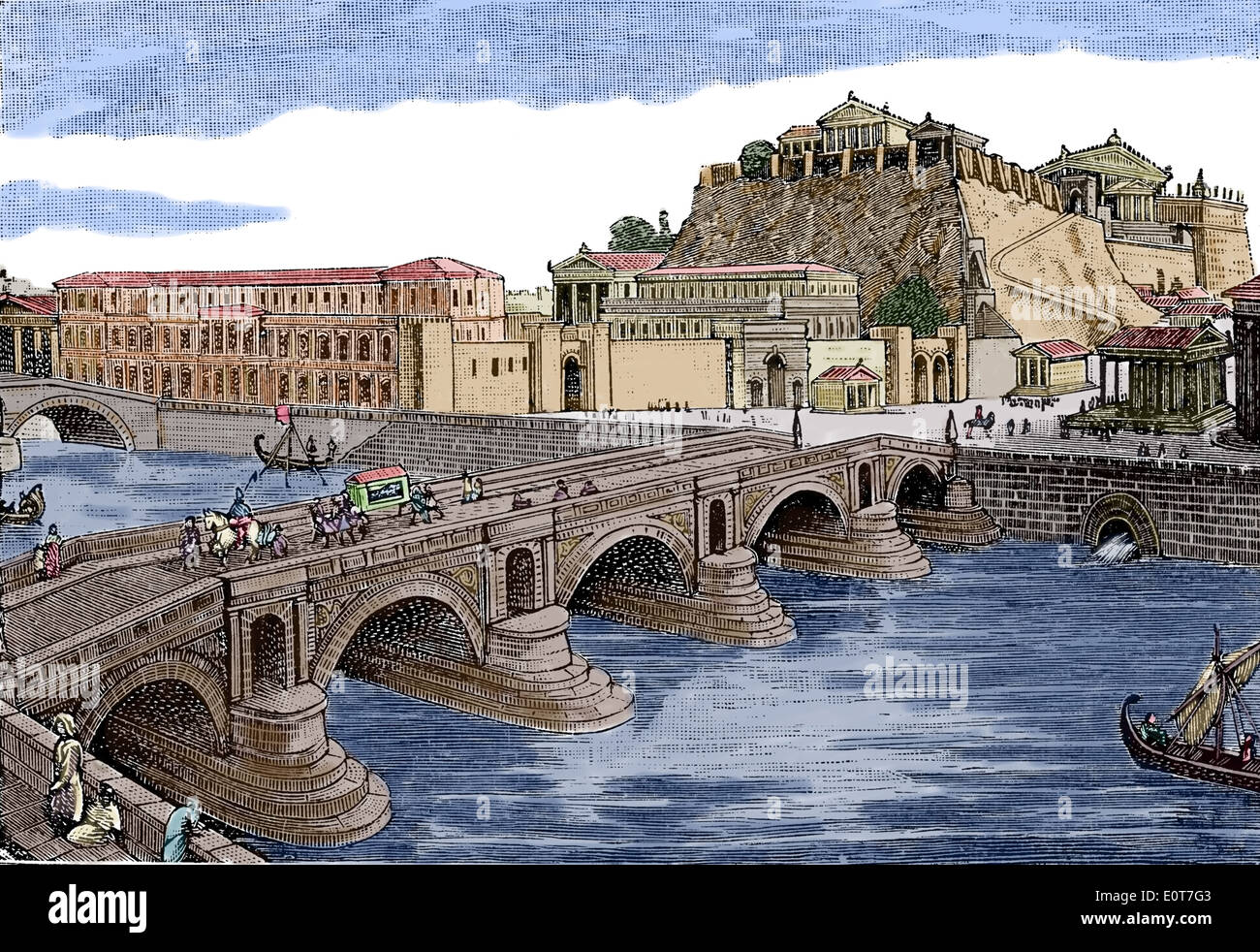
Italien. Rom. Capitoline und Cloaca Maxima. Das Kapitol ist ein Roman Hill zwischen dem Forum
28 Aug 2017 By Michael Price Elisabetta Bianchi Ancient Rome's lead plumbing was an architectural marvel, connecting the expansive republic and its vast population to a steady water supply brought in through aqueducts and flushing waste out through cavernous sewers (like the Cloaca Maxima, above).

Site of the Cloaca Maxima (Illustration) Ancient History Encyclopedia
The Cloaca Maxima, or the Great Sewer in Latin, is a testament to the ingenious engineering capabilities of the ancient Romans. Dating back to the 6th century BC, this vast sewer system was a marvel of its time, demonstrating the Romans' advanced understanding of infrastructure and public hygiene.

A very Romanlooking drain in ancient Rome. The Cloaca Maxima in the Roman Forum In Ancient
The Cloaca Maxima's construction is generally attributed to the king Tarquinius Priscus, or perhaps Tarquinius the Superb, it is one of Rome's first major works of urbanization. Originally an open channel, it followed the natural flow of streams from above the suburra (Monti) and ran all the way to the Tiber.

Cloaca maxima rome italy europe fotografías e imágenes de alta resolución Alamy
Cloaca Maxima . The "Greatest Sewer" of ancient Rome is one of the oldest sewer systems in the world, and is still in use. Rome, Italy. The Mouth of Truth.
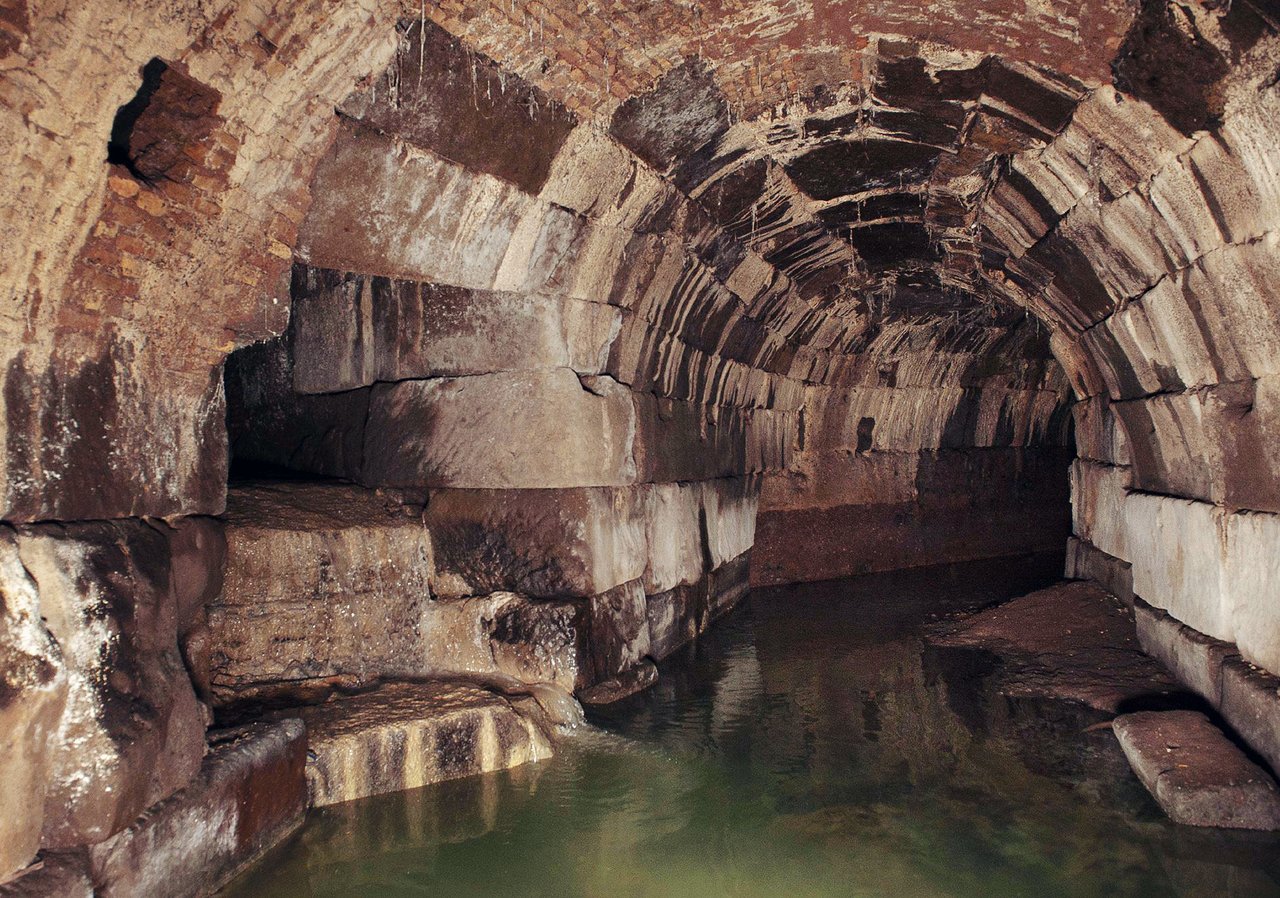
Cloaca Maxima, sistemul de canalizare al Romei antice istoria celui mai bătrân edificiu de
The Cloaca Maxima was originally constructed as a drainage channel, a "monumental, open‐air, fresh‐water canal" (Hopkins 2007, 1). The work was initiated before Rome became a Republic by the fifth king of Rome, Tarquinius Priscus, who reigned from 616 to 579 BC.
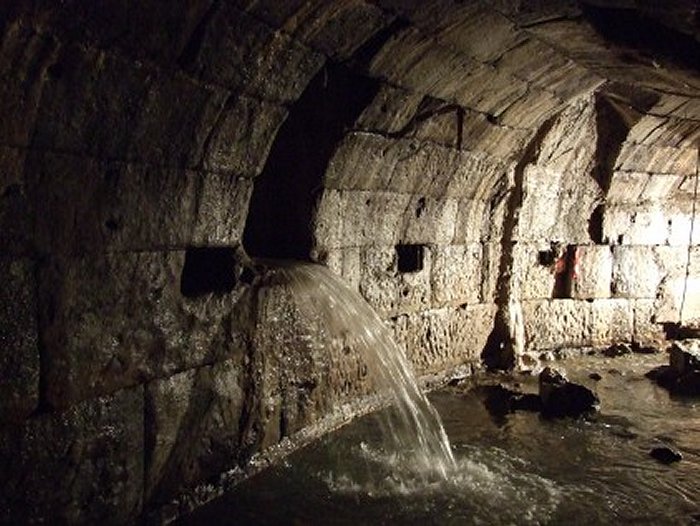
Venus Cloacina Roman Goddess Of Sewers And Drains Ancient Pages
3 Purification in ancient Rome; 4 Pollution, propriety and urbanism in Republican Rome; 5 The 'sacred sewer': tradition and religion in the Cloaca Maxima; 6 Crime and punishment on the Capitoline Hill; 7 On the burial of unchaste Vestal Virgins; Part II Modernity; Bibliography; Index

Italy, Rome, Cloaca Maxima Stock Photo Alamy
The site of the main sewer, called the Cloaca Maxima located in the Forum Romanum. Believed to be drained around 600 BCE by Tarquinius Priscus, the draining of the area between the Palatine, Capitoline, Esquiline & the Viminal Hills led to the establishment of the Forum Romanum and helped to promote the growth of the city of Rome itself.

"View of the Cloaca Maxima, Rome" Christoffer Wilhelm Eckersberg Artwork on USEUM
The word "latrine," or latrina in Latin, was used to describe a private toilet in someone's home, usually constructed over a cesspit. Public toilets were called foricae. They were often attached to.
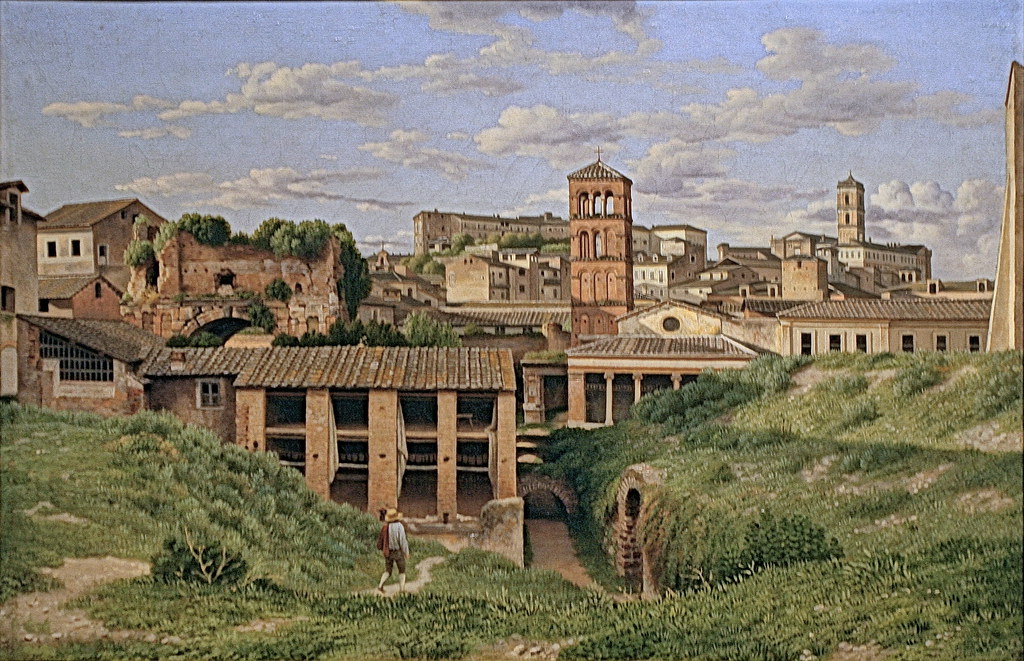
View of the Cloaca Maxima, Rome by Christoffer Wilhelm Eck… Flickr
Cloaca Maxima Rome, Italy The "Greatest Sewer" of ancient Rome is one of the oldest sewer systems in the world, and is still in use. Been Here? 480 Want to Visit? 726 Cloaca Maxima's outfall.

Part of Rome's Cloaca Maxima, the city's sewer system. Tunnels dating from the 1st century AD
Cloaca Maxima 7 reviews #1,198 of 2,394 things to do in Rome Historic Sites Write a review What people are saying By Peter H " Advanced Roman engineering " May 2019 The attached photo shows a sewage line going to a larger line encircling The Roman Coliseum and dumping into The Cloaca Maxima.
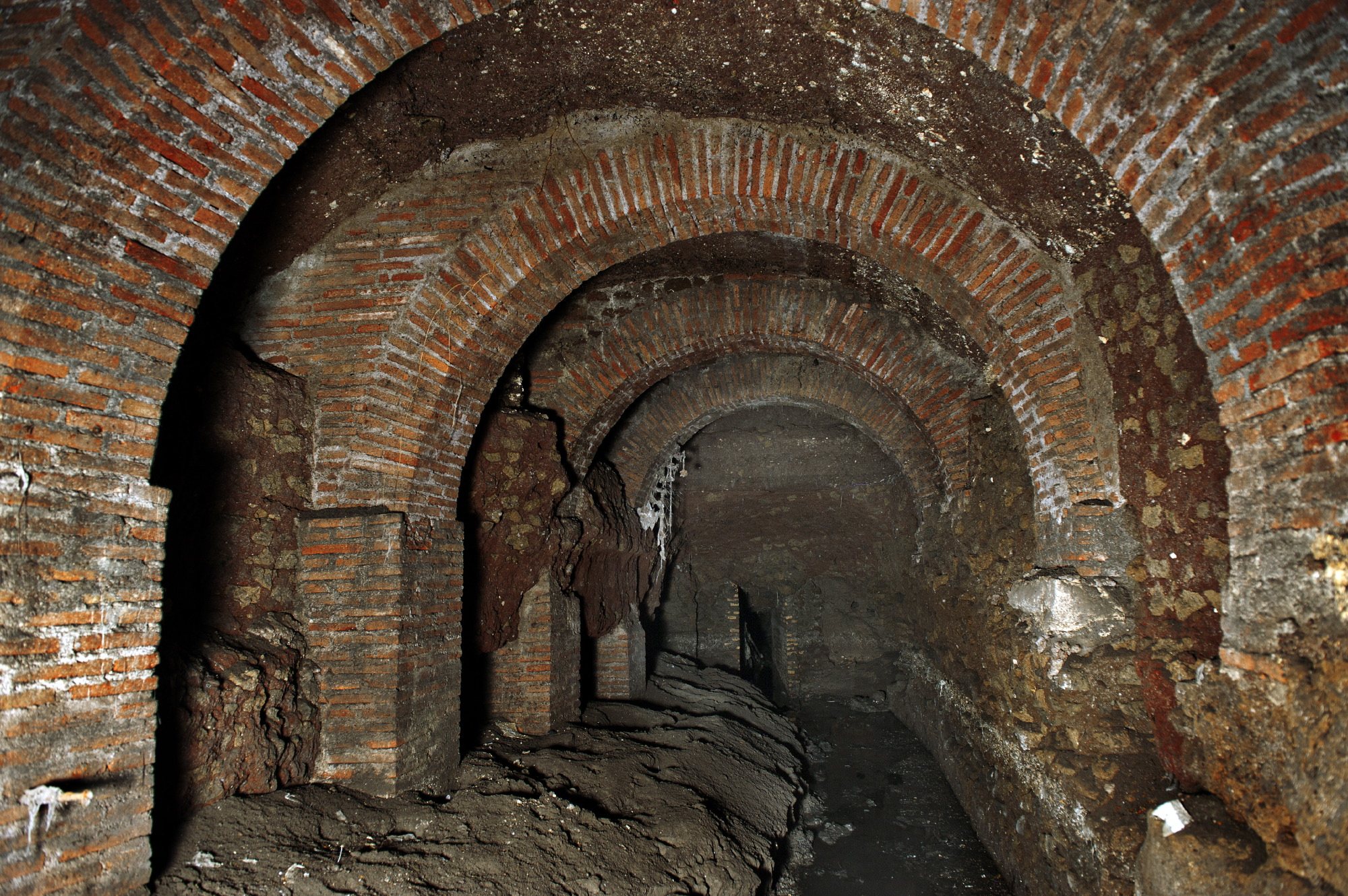
La cloaca máxima de Roma
The Cloaca Maxima was one of several large ditches that drained water from inhabited areas of the City of Rome. The Cloaca Maxima drained the valleys between the Esquiline, Viminal, and Quirinal Hills, as illustrated here: It traveled along the Argiletum into and across the the Forum: Eventually, it made its way to the Tiber River by way of the.
Cloaca Maxima one of the world's earliest sewage systems, constructed c. 600 BC in Rome
The Cloaca Maxima in Rome was not part of a master plan to sanitize the city. Its purpose was removing water that pooled on the city's uneven streets and draining water from low-lying areas when.

Cloaca Maxima Wikiantiga
Cloaca Maxima ("largest sewer") was one of the largest Roman structures ever built. The ancient Romans completed the construction of the sewer that passed through Forum Romanum, in the 6th century BCE. According to Roman sources, the ordering party was king Tarquinius Priscus himself.

Cloaca Maxima Rome Ancient rome, Rome, Ancient
Rome's Cloaca Maxima, or Great Sewer, probably began its long and illustrious life as an open canal carrying water through the Roman Forum to the Tiber. According to Livy, it was built by command of Tarquinius Priscus, the fifth king of Rome, to drain the marshy and flood-prone valley between the Capitoline, Esquiline and Palatine hills which.

Function and Significance Cloaca Maxima
Rome, Cloaca Maxima Q746102 Cloaca Maxima: the "great sewer" in Rome. Outfall The Cloaca Maxima ("greatest sewer") is one of the oldest monuments of Rome. It was built as a canal through the Forum Romanum in the sixth century BCE and its construction is generally attributed to king Tarquinius Priscus.

Cloaca Máxima Ingeniería Romana Pinterest Archaeology and History
Cloaca Maxima, ancient Roman sewer, one of the oldest monuments in the Roman Forum. Originally an open channel constructed in the 6th century bc by lining an existing stream bed with stone, it was enclosed, beginning in the 3rd century bc, with a stone barrel (semicircular) vault.